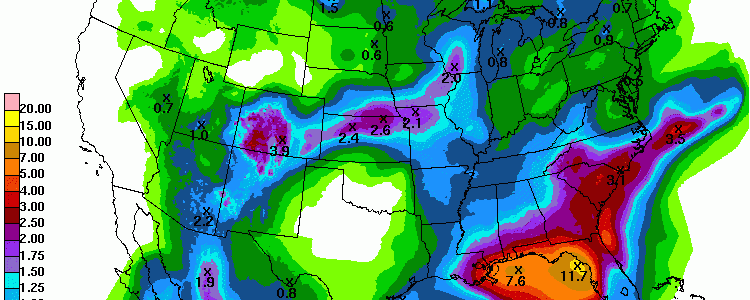Pam Knox
-

Last night was a doozy for those of us living right in Athens, GA. From about 9:30 pm to just shy of 11:30 pm, the airport received 4.96 inches of rain. Strong thunderstorm cells rained continuously over the area with only minor movement over the 2-hour period. I live about a mile south of the…
-

William Schmitz of the Southeast Regional Climate Center pointed out a great source of historical hurricane track information to me today. You can find it at https://weather.unisys.com/hurricane/index.php. This provides the best known tracks to hurricanes going back to 1851. (The map below is for 1893 just because it has a lot of tracks on it.) Obviously,…
-

The Washington Post published an interesting article this week on new evidence found to support their legend on the founding of the first dynasty. In a new paper published Thursday in the journal Science, Wu and his colleagues describe geological evidence for a catastrophic flood on the Yellow River in about 1900 B.C. — right around the…
-

I want to give a quick shout-out to two UGA gardening blogs that got recognized in the top 100 garden blog list recently. You can find the entire list at https://blog.feedspot.com/gardening-blogs/. The first blog is the Center for Urban Agriculture’s blog at https://ugaurbanag.com/gardens/ which is put together by Becky Griffin, Extension Community and School Garden Coordinator. The…
-

The latest 7-day QPF shows a significant rain event may be brewing along the Gulf Coast and, to a lesser extent, the east coast of Florida, Georgia and the Carolinas. Computer models are suggesting that a low pressure center could sink down into the Gulf and grow under the influence of the unusually warm water…
Posted in: Climate outlooks -

Chris Robbins of iWeatherNet.com posted some interesting statistics on trends in lightning fatalities earlier this week. They show a significant decrease in lightning deaths from 1940 to the present. I think a lot of this can be attributed to the public information that has been stressed by the National Weather Service and other meteorologists. But…
-

The Sightline Institute published a unique resource on climate change back in 2013 that just came to my attention. Dr. Greg Johnson, a Northwest oceanographer, published a set of 19 illustrated haikus which summarize the latest IPCC report on changing climate. Take a look at the beautiful artwork and see how succinctly this very large…